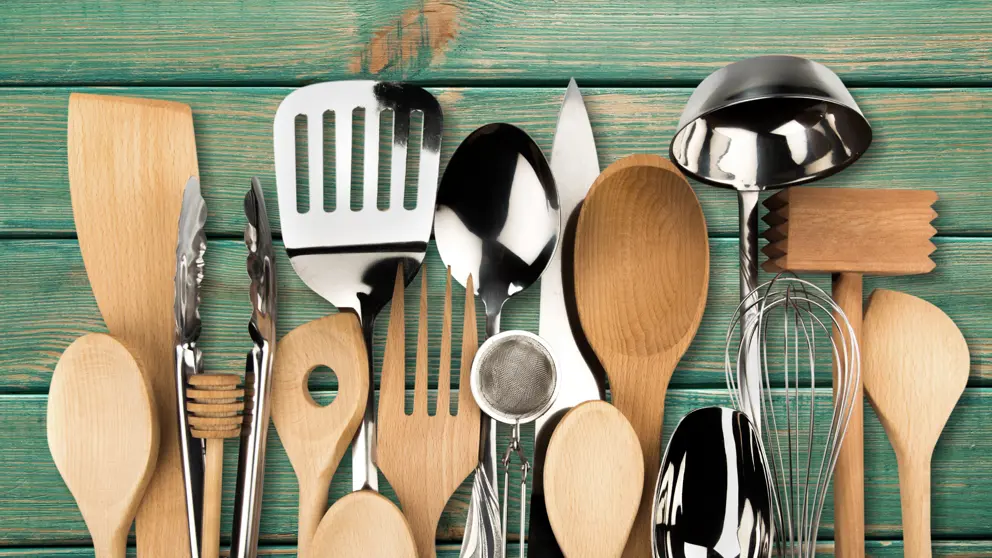Heart-healthy eating starts at home. In your kitchen, you control ingredients and portion sizes — both key to a nutritious eating plan.
And of course, preparing food at home is easier when you have the right tools and appliances. We asked dietitians across the country to share their must-have (and nice-to-have) kitchen gear for preparing balanced, healthy meals and snacks.
Whether you’re equipping your first apartment or downsizing a lifetime’s accumulation of kitchenware, their tips will help you make smart choices.
Vegetables first!
Vegetables are the cornerstone of any heart-healthy diet, and you want to fill half your plate with a variety at each meal. It helps to have the following tools in your kitchen:
- Cutting boards: Most people like to have two — one for vegetables and fruit; and and a second for meat, fish and poultry. Ideally, they’re different colours or materials to cut down the risk of cross-contamination (you never want to slice fruit where you’ve just chopped raw chicken).
- Knives: Preparing vegetables is easiest with a chef’s knife and a smaller paring knife for finer cuts. A serrated knife is handy for tender tomatoes.
- Peeler: You know it’s great for carrots and potatoes; it works equally well to peel mangoes and eggplant. And if you want to make cucumber or carrot ribbons, your peeler does that too!
Knives can get most jobs done, but some people like the convenience of specialty gadgets. Here are some nice-to-have additions that you may want to add to your utensil drawer:
- garlic press
- mandolin for thinly sliced vegetables
- spiral tool to make vegetable ribbons
- rasp to zest citrus fruit
- salad spinner
Mealtime shortcuts
Pantry essentials like brown rice, pasta and canned foods make mealtime easy. Have a can opener and a colander or strainer on hand. The colander can be used to drain noodles, and to drain canned foods, such as beans and lentils. Studies show that rinsing canned foods under running water can cut the sodium content by up to 40%.
When you are ready to stir-fry, roast or bake your ingredients, you’ll need these essential items:
- Measuring cups and spoons
- Tongs
- Food thermometer: Keep food safe by cooking it to the right temperature to kill bacteria.
- Frying pan: A non-stick option can help you use less oil and butter.
- Baking sheet: Pair it with parchment paper for easy clean-up.
- Pots: Most people need two — a large one for soups and stews, and a smaller one for boiling pasta and rice or steaming vegetables. Make sure they come with lids for easy steaming. It’s a smart way to cook vegetables to retain vital nutrients (and is better than boiling, where vitamins get lost in the cooking water).
- Spatulas: Two should do - one metal spatula for flipping; and one curved silicon spatula for mixing and scooping.
Additional appliances
Your stove top and oven should cover all your bases. But for people who like to try new things, there are some bonus appliances that are nice to have for heart healthy cooking.
- Crockpot or slow cooker: The appeal of this appliance is that you can add ingredients in the morning, and come home to a fully cooked meal — no need for take-out. Slow cookers work well for chili, stew, curry, roast chicken and brisket.
- Pressure cooker: If you love beans but hate the long soak and cook time, pressure cookers are ideal. They can also be used to cook stew, soup and tough cuts of meat. Note you can get a two-in-one slow cooker and pressure cooker appliance.
- Air fryer: If you want crispy results without excess fat from deep-frying, try an air fryer. It’s great for potato wedges, ‘fried’ chicken, crispy tofu, breaded fish and onion rings.
- Food processor: It can save you time by quickly chopping vegetables. It’s also great for making dips, sauces and dressings.
- Blender: Makes smoothies, dips and soups quickly and easily. Some blenders allow you to cook soup right in the cannister (it heats it for you too!).
Now you’re all set to make heart-healthy meals and snacks!
- Browse our heart-healthy recipes.
- Get advice on healthy eating to reduce your risk of heart disease and stroke.

